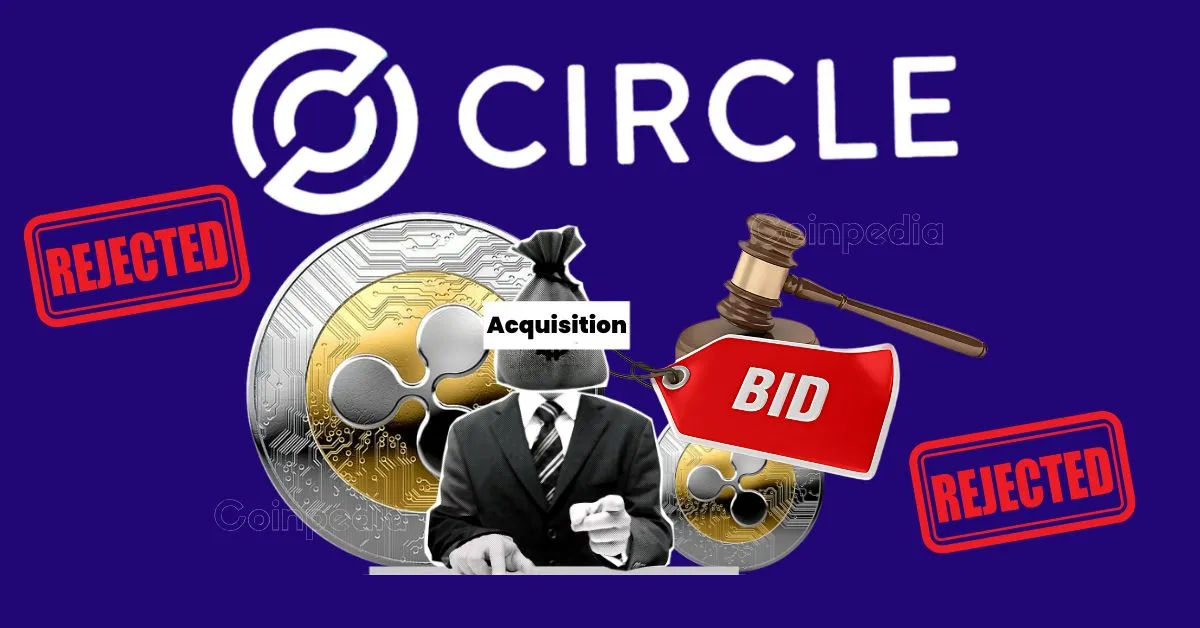The Ripple-Circle Acquisition Saga: A Strategic Chess Game in the Crypto World
The cryptocurrency realm is abuzz with the latest developments surrounding the potential acquisition of Circle, the issuer of the popular stablecoin USDC, by Ripple. This high-stakes maneuver is more than just a business transaction; it represents a pivotal move that could reshape the stablecoin sector and the broader crypto market. Let’s explore the intricacies of this unfolding drama.
Initial Offer and Rejection
Ripple, the enterprise blockchain company known for its XRP token, initially proposed a takeover of Circle with an offer ranging between $4 billion and $5 billion. This bid was swiftly rejected by Circle, which deemed the offer too low, given its market valuation and strategic importance. The rejection underscored Circle’s confidence in its standalone potential and its plans to go public through an Initial Public Offering (IPO). This move highlighted Circle’s belief in its own value and its ambition to become a publicly traded entity, potentially capitalizing on the growing interest in crypto-related public offerings.
The Escalating Bid
Undeterred by the initial rejection, Ripple reportedly escalated its offer to a staggering $20 billion. This significant increase highlights Ripple’s determination to secure a leading position in the stablecoin market, a sector witnessing intense competition and regulatory scrutiny. The alleged $20 billion offer, though unverified, signals Ripple’s serious intent and its willingness to engage in a high-stakes bidding war. This escalation suggests that Ripple views Circle as a strategic asset worth fighting for, despite the potential challenges and risks involved.
Coinbase’s Strategic Stake
One of the most intriguing aspects of this saga is Coinbase’s stake in Circle. Coinbase, a major cryptocurrency exchange, acquired an equity stake in Circle as part of a strategic realignment that led to the dissolution of their joint stablecoin venture, Centre Consortium. This stake could potentially block Ripple’s alleged $20 billion offer, adding another layer of complexity to the acquisition drama. Coinbase’s involvement adds a competitive dimension to the saga, as it could either facilitate or hinder Ripple’s acquisition plans, depending on its strategic interests.
The Stablecoin Battle
The battle for stablecoin dominance is intensifying, with Ripple’s moves to acquire Circle being a clear indication of this trend. Stablecoins, which are pegged to the value of traditional currencies, play a crucial role in the crypto ecosystem by providing a stable medium of exchange and store of value. Ripple’s interest in Circle is driven by its desire to integrate deeper into the financial sector and expand its influence in the stablecoin market. This strategic move could enhance Ripple’s position in the crypto world, making it a more formidable player in the stablecoin arena.
Regulatory and Market Dynamics
The regulatory landscape is another critical factor in this acquisition saga. Ripple has been embroiled in a long-running legal battle with the U.S. Securities and Exchange Commission (SEC) over the classification of its XRP token. This regulatory uncertainty could impact Ripple’s ability to complete the acquisition and integrate Circle’s operations. Additionally, Circle’s decision to focus on its IPO reflects its confidence in navigating the regulatory challenges and capitalizing on the growing interest in crypto-related public offerings. The regulatory environment will play a significant role in determining the outcome of this saga, as both companies must navigate complex legal and compliance issues.
Potential Bidding War
The escalating bid from Ripple has sparked speculations about a potential bidding war with Coinbase. Coinbase, with its strategic stake in Circle, could emerge as a formidable competitor in this high-stakes game. The outcome of this potential bidding war could have far-reaching implications for the crypto market, reshaping the competitive dynamics and influencing the future of stablecoins. A bidding war would not only drive up the valuation of Circle but also intensify the competition among major players in the crypto industry, leading to potential innovations and market shifts.
The Strategic Chess Game
The Ripple-Circle acquisition saga is a testament to the high-stakes game being played in the crypto world. With billions of dollars on the line and strategic stakes at play, this drama is far from over. As Ripple, Circle, and Coinbase navigate the complexities of regulatory hurdles, market dynamics, and strategic maneuvers, the outcome will undoubtedly shape the future of the stablecoin sector and the broader crypto landscape. The crypto community watches with bated breath, awaiting the next move in this strategic chess game.
Conclusion: The Future of Stablecoins
The Ripple-Circle acquisition saga highlights the intense competition and strategic maneuvering within the crypto industry. As the battle for stablecoin dominance intensifies, the outcome of this saga will have significant implications for the future of digital currencies. Whether Ripple successfully acquires Circle, or if Coinbase steps in to block the deal, the crypto world will be watching closely. The strategic moves and counter-moves in this high-stakes game will shape the competitive landscape and influence the development of stablecoins and the broader crypto market. The future of stablecoins is at stake, and the next few moves in this chess game will be crucial in determining the winners and losers in the crypto world. The crypto community awaits the next chapter in this unfolding drama, eager to see how the pieces fall into place.

